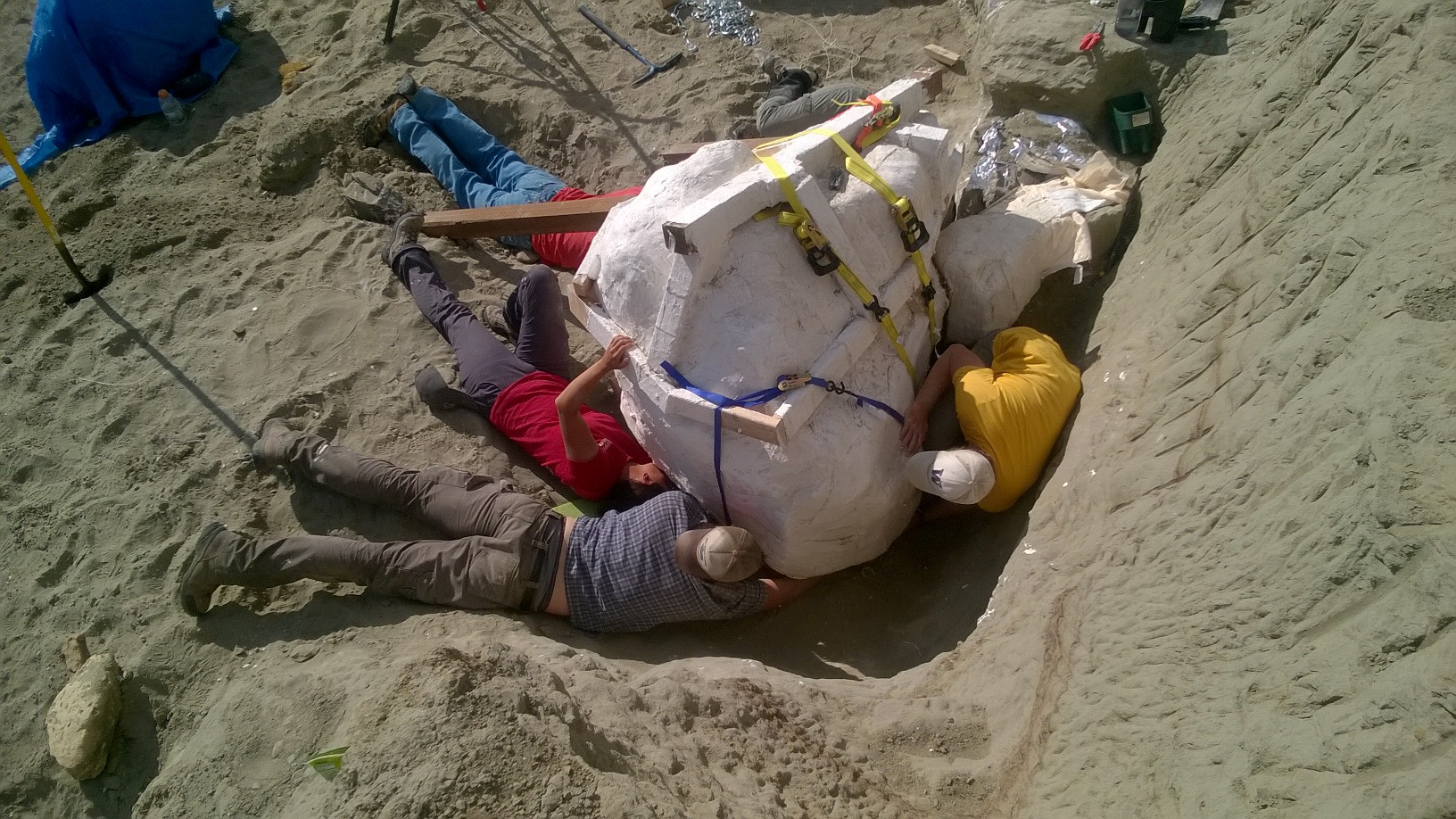
Despite paleontology's cachet with the preschool set, the day-to-day work of uncovering dinosaur fossils isn't all glamour. Just ask Gregory Wilson, staff paleontologist at the Burke Museum, who heads to Montana every summer to lead a field research project.
"It can be like working in a quarry," he says. "You're moving tons of rock ... At times the only thing that keeps you going is the idea that you're working on something that may be an iconic specimen that people will visit for years and years."
This summer, Wilson — whose official title is Burke Museum adjunct curator of vertebrate paleontology and who's also an associate professor of biology at the University of Washington — and his team of 45 scientists, students and volunteers had just such a discovery, which you've probably heard about in the well-deserved flurry of media attention they received last week. Following a find by two volunteers in 2015 of T. rex bones in the fossil-rich Hell Creek area of Montana, Wilson's team returned this summer to do more excavation. Over a month, they painstakingly uncovered what turned out to be one of the most complete T. rex skeletons ever found.
The process, Wilson says, involved taking a wedge out of a hill and moving 20 tons of dirt, using heavy equipment such as jackhammers as well as smaller handtools to carefully uncover the individual bones and ribs.
"It’s very primitive technology," he says.
The most exciting moment? "We were holding our breath until we knew we had the skull," says Wilson. "When we saw the teeth we knew we had it."
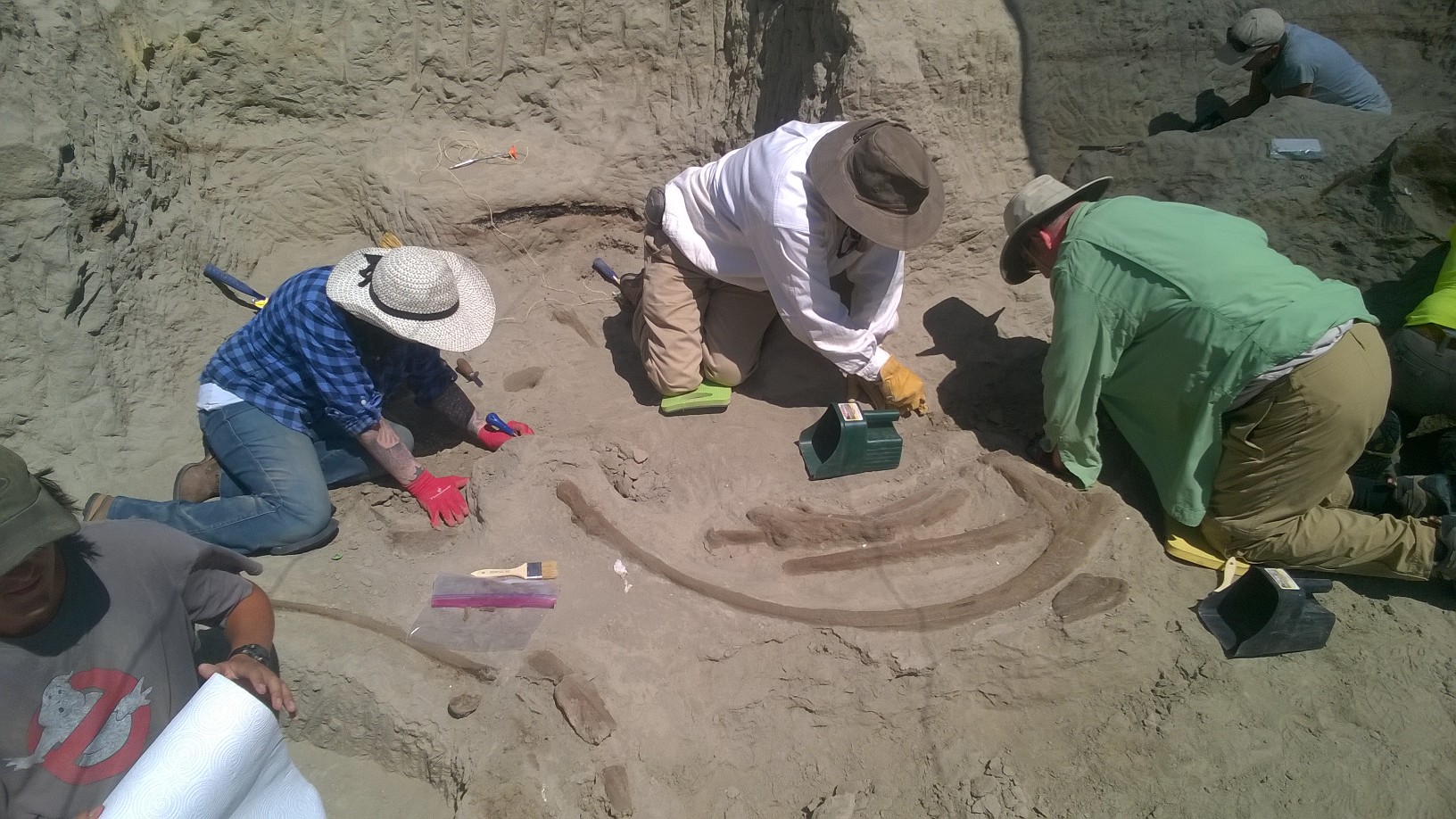
The skull, of course, is the source of the T. rex's bone-crushing power (here's one National Geographic fact to share with your kids: It's estimated that the T. rex could eat up to 500 pounds of meat in one bite). This specimen is believed to be one of only 15 reasonably complete skulls in the world.
Last week, the T. rex skull, which has been only partially revealed from the rock that preserved it, was carefully wrapped in a plaster jacket and transported to the Burke Museum in a flatbed truck. Weighing 1 ton and still encased in its jacket, it's on display in the lobby of the museum until October. At that time, scientists will begin work to fully prepare the specimen for permanent display at the new Burke museum, which opens in 2019.
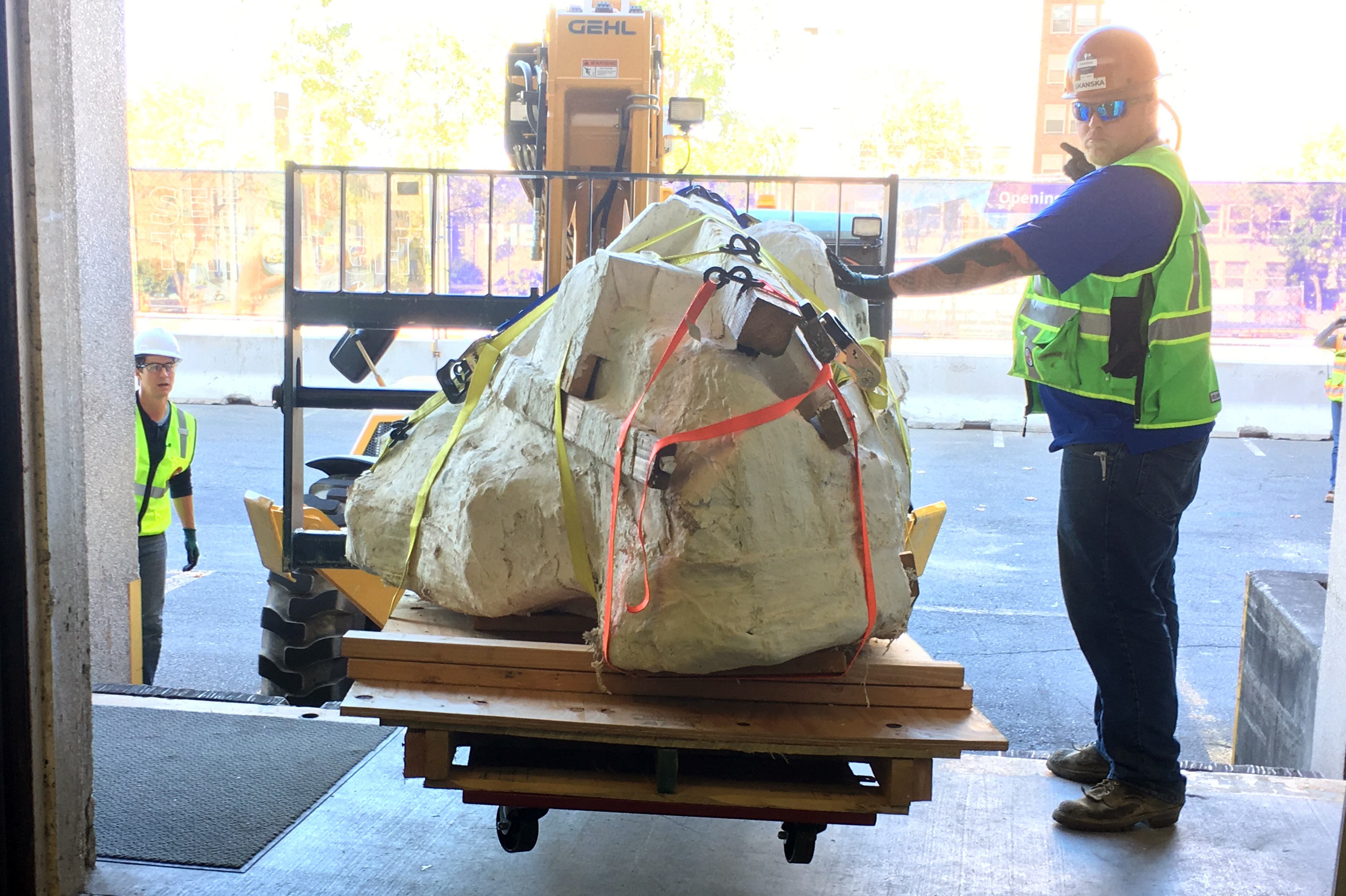
Burke paleontologists continue to search for additional parts of the dinosaur at the Hell Creek site. Wilson expects the final, prepared fossil specimens to be stunning. "It's beautiful bone," he says with a laugh. "It's a good-looking T. rex."
The skull at the Burke
Last Saturday, I took my 6-year-old — who is currently obsessed with Jurassic Park — down to the Burke to see the museum's celebrated new resident for ourselves.
The truth: The plaster-encased, 1-ton T. rex skull looks like a lot like, well, a large hunk of something encased in plaster.
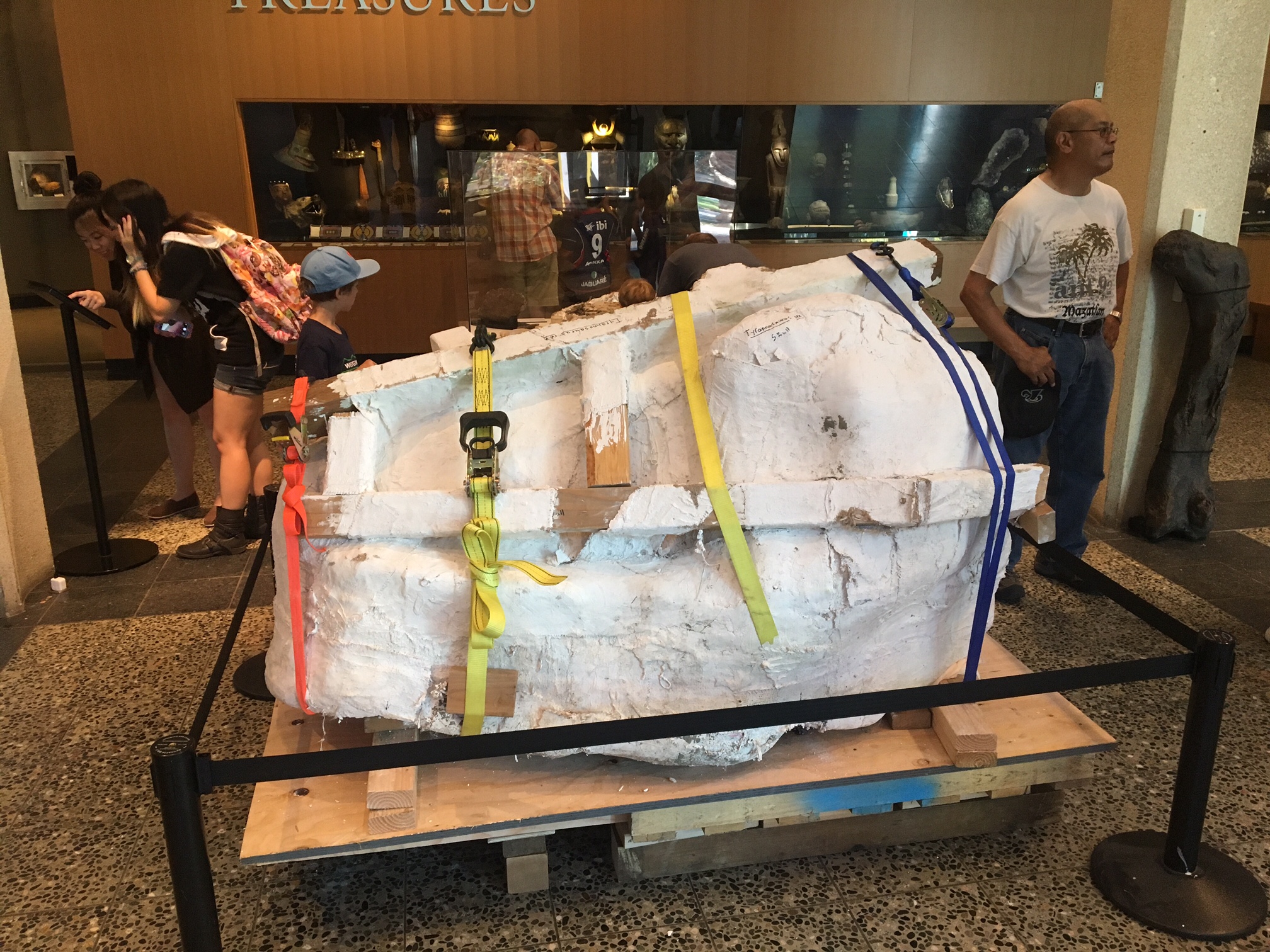
My son was impressed by the size of the skull, but, not surprisingly, it didn't match (at all) with his mental image of what a ferocious T. rex would look like. On the other hand, he was engaged by some of the other fossil specimens on display, such as a long, pointed T. rex tooth, and the tools that the paleontologists used for excavation. There is also a replica of a leg bone that kids can touch ("This isn't a real fossil," my son said knowingly).
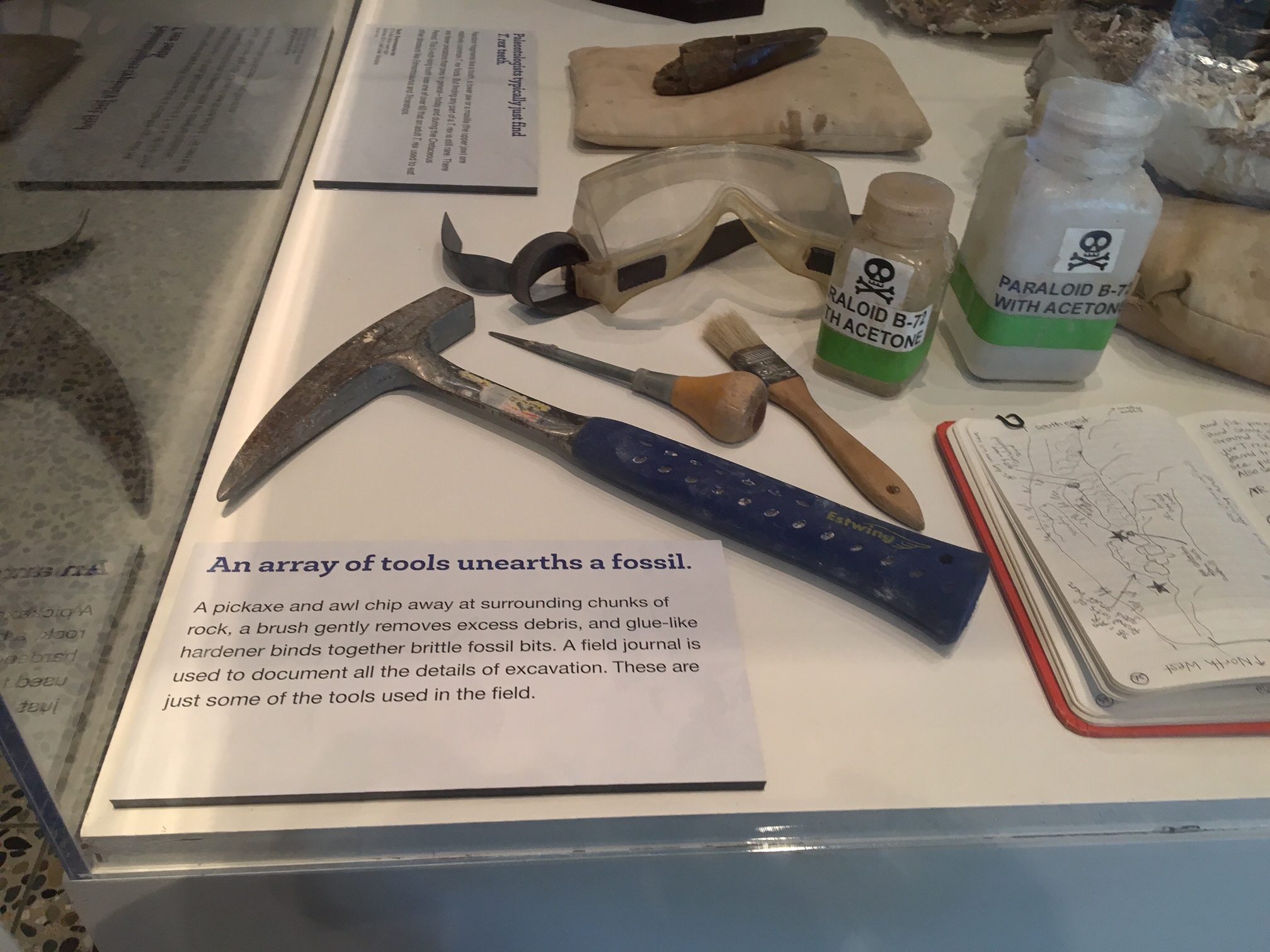
My recommendation: Take your kids now to see the skull, encased, lumpy and unrecognizable; and take them again to Dino Weekend in March 2017, when they'll be able to see the fossil after it's been more fully revealed and can talk to real paleontologists (including Wilson) about the process. And take them again when the skull is fully excavated, prepped and displayed as a star fossil at the new Burke Museum.
Through repeated visits as well as videos and displays showing the nitty-gritty details of paleontological work, kids gain a glimpse into the scientific journey of discovery and understanding. This is a primary goal of the Burke and a driving force behind the design of the new museum.
"One of the ideas of the new Burke is to invite the public into the process of science," Wilson says. The new, 113,000 square foot museum building (look for the construction site next to the current Burke), is designed to be “inside-out,” with labs and collections storage that are visible throughout the museum.
Wilson, who is a father of two, hopes that by engaging kids in all aspects of a discovery, they will begin to understand that scientific knowledge is anything but static.
"Kids think that science is something in a book," he says. "They think we know everything about T rex. But every day we add new information — that is what excites me."
Ferocious facts about the T. rex skull
- The skull is about 4 feet long and weighs about 2,500 pounds in its protective plaster jacket.
- At hip height, the T. rex would have been nearly as tall as a city bus,and as long as a bus from tail to head.
- The T. rex skeleton is 66.3 million years old and is estimated to have been about 15 years old when it died.
- The skull is estimated to be the 15th reasonably complete T. rex skull in the world.
- According to Live Science, T. rex had the strongest bite of any land animal that ever lived.
- K–12 educators were part of the team who uncovered the find, through a program called the DIG Field School.
- Paleontology volunteers are also an important part of the teamthat found the T. rex fossils. The skeleton, called the Tufts-Love rex, is named for two volunteers (Jason Love and Luke Tufts) who made the initial find.
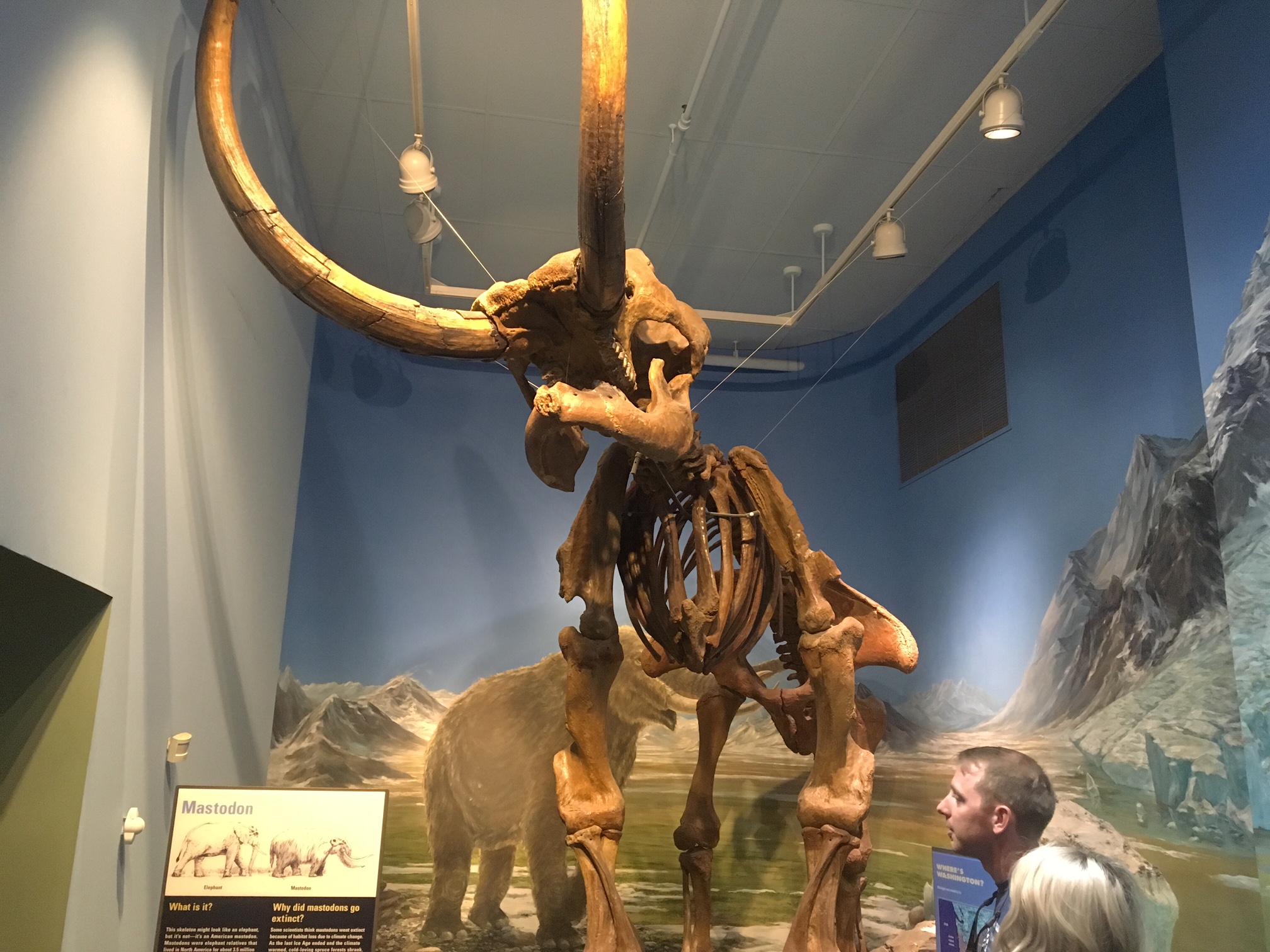
If you go ...
Where: The Burke Museum is at 4331 Memorial Dr. N.E. on the University of Washington campus, Seattle
When: It's open daily from 10 a.m.–5 p.m., and from 10 a.m.–8 p.m. on the first Thursday of the month (when admission is also free).
Cost: $7.50 (ages 5–18); $10 adults; kids ages 4 and under free. Plan your visit here.
Dino dates: There will be special dino-themed activities the last Sunday of September (Sept. 25) and on Dino Weekend, March 11–12, 2017, when the T. rex skill will again be on display.
Find out more: burkemuseum.org/exhibits/t-rex-discovery
More to see at the Burke:
- Wander through the dino gallery to see triceratops, stegosaurus and allosaurus fossils on display, as well as a complete and very impressive mastodon skeleton.
- Another recent Burke discovery, Washington's first dinosaur fossil find, is also on display. The 80-million-year-old fossil is a partial left femur bone of a theropod dinosaur.
- Check out the gorgeous Wild Nearby exhibit on the North Cascades; kids will especially like the fire lookout model where they can peer through telescopes; the bird display that shows the geographic variation in feather color; and a display on the fierce wolverine.
- For young kids, don't forget to pause outside and see the progress on the new Burke Museum construction; the new museum is slated to open in 2019. You can also watch time-lapse construction videos.











